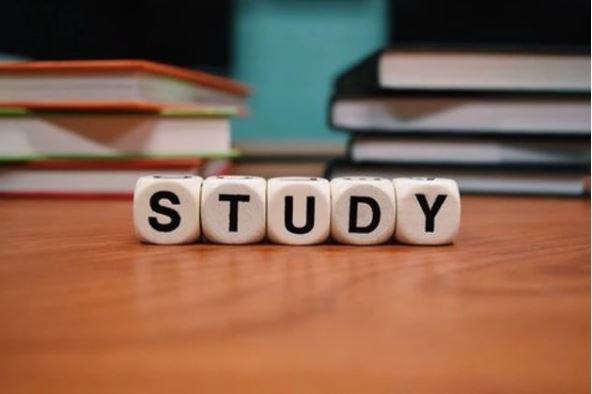Syd’s Survival Guide- Studying Part 3

Hey! It’s Syd with another installment of how to study.
This week I’m covering specifically how to study, and I don’t mean highlighting every word in your textbook.
There are different techniques for studying. Like every topic I’ve covered in this series, don’t let anyone tell you there’s only one way to study; do what works best for you.
While I won’t be covering every technique known to man, I will be covering a few that I have tried and have learned about.
Technique 1: The SQ3R Method
The SQ3R Method sounds a little intimidating, but it’s just an acronym for the steps. It’s surprisingly not that different from what most of us learned in middle school and high school when practicing word and story problems.
1) Survey- Skim the passage and look at bolded words, titles, and headings
2) Question- What is the chapter about? What do I already know?
3) Read- Read what needs to be read.
4) Recite- Summarize what you’ve read.
5) Review- Quiz yourself.
This technique is great for introduction courses and basic classes that are definition and textbook-based. In my personal opinion, this is not my favorite form of studying because it can be time consuming and most of my courses are lecture based.
Technique 2: Mind Maps
Mind Maps are a creative approach for writing everything you know and then seeing where you have knowledge gaps in your studying
1) Grab a piece of paper, or if you prefer electronics, there are tools online to do this.
2) Write whatever topic you want to focus on in the center.
3) Set a timer and write everything you can think of about this topic.
I’ll give you an example for this one since it can be a little confusing.
My main topic is dogs. Dogs can be either male or female. There are different breeds, types, and sizes of dogs. There are hounds, hunting, and mountain dogs. Breeds include but are not limited to Chihuahua, Great Dane, Pitbull, Bulldog, and Husky. Sizes include teacup, miniature, toy, large, and medium.
Mind Mapping is great for either introducing new topics and brainstorming ideas or reviewing and writing everything that you know. I enjoy these as breaks from the typical notetaking and studying notes.
Technique 3: Flashcards with a Twist — The Leitner System
Flashcards are meant for reviewing concepts and definitions by placing a question or term on one side and the answer on the other side. The Leitner System takes this up a notch.
You’ll need about three boxes, or piles, for this. Every definition or concept starts in the first pile or box. Go through the cards and see what you don’t know and what you do. If you know it, start a new pile or box. The goal is to weed out the concepts you need to improve on.
When you move on to the second box or pile, go through those and repeat the process. The key here is that if you miss the concept or definition, it gets dropped down a box and you have to build it back up.
Daily, you’ll go through box (pile) one and check on those terms and get familiar with them. With the other sets, you’ll pick one to go through and keep those same strategies of keeping these memorized for longer periods.
Quizlet’s “learn feature” applies this method in a digital method if you prefer to do this electronically.
Technique 4: Color Coding
Color coding is highlighting useful information to make it stand out on the page and in the brain. Color coding is not highlighting every word.
There are several ways to do this and it can be time consuming. Here are some tips if you choose to use this method:
1) Use red, green, or blue pens to write with. You have these cones in your eyes.
2) Highlight in yellow for specific things.
3) If you get creative, you can color-code by topic or chapter, but I would urge you to not highlight in separate colors for dates, names of things, places, or people. It gets confusing for the eye.
4) Think about what is actually important. Yes, it may seem like everything in your textbook is important, but it’s not.
Fun Fact of the Day: Yellow highlighters were invented to force the eye to focus on whatever you highlighted because the eye does not contain yellow cones for detecting that color. The cones in the eyes are what give us the ability to detect color and light. Yellow is especially hard for our eyes to transmit because we have red, green, and blue cones. The eyes and brain have to concentrate to focus on the color yellow.
Technique 5: The Feynman Technique
This technique is most similar to mind mapping but has a different approach. The purpose of this is to see what you know and what you don’t. To summarize, this technique is teaching to someone else and simplifying it down.
Sometimes students get caught up in lofty words and ideas but cannot explain the small intricate parts of whatever they are covering. By teaching this topic to someone else, it forces you to make sure you understand everything.
Personally, I love this technique because it allows for less of the typical studying aspect for more understanding of the material. This technique is great for a lot of STEM classes because they include terminology and mechanisms that can get tangled and confused.
If you have other ways of studying that work best for you, do them. These are just new techniques if you have no idea where to start, or are wanting to try new things.
As always, good luck studying and go Dawgs.

Sydney Graves joined The Southwestern staff during the fall semester of 2020. She is co-editor-in-chief with Rachel Masson and serves as Campus Life editor....

